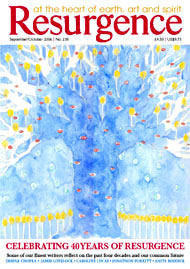THE UNITED STATES is a hard-driving nation. The metaphor speaks of energy, action and goal-oriented determination. It carries a faint implication of impulsivity. It is apt.
The automobile is a US icon; driving when and where you want has come to seem a birthright. Cheap fuel has been part of the contract. Few politicians have dared to tamper with that attitude. They are frightened of increasing the fuel tax to reduce consumption.
Cheap fuel has shaped the country. It has allowed schools, jobs and shopping centres to be consolidated far from homes and far from each other. Except in the largest cities, public transport is often poorly funded and poorly planned. Walking is seldom encouraged as a means of transport and is often perilous; sidewalks in small towns or rural areas are mostly non-existent. The same applies to cycle paths. Car ownership comes pre-packaged with a sense of entitlement. Walking to work, to school or to shop feels like a radical act. The motor car rules.
Periodically these assumptions are shaken. In the seventies the fuel crisis impacted car design and driving habits – briefly. The crisis over, conspicuous energy consumption returned. Consumers wanted bigger, more powerful automobiles; manufacturers wanted unlimited freedom on how they might meet these demands. Public efforts to encourage car-pooling and mass transit, mild as they have been, have focused on reducing traffic density – not saving fuel.
The new fuel crisis, coming when there is increasing evidence of dwindling resources, has a different feel to it. Perhaps this is optimistic, but a mindset could be changing.
The trouble is, most people are not looking to reduce consumption. As Vice President Dick Cheney famously said, “Conservation may be a sign of personal virtue, but it is not a sufficient basis for a sound, comprehensive energy policy.”
What people seem to want is to drive as much as before while using less energy – or an alternative energy source.
Perhaps concerned not to put off readers, the press has devoted little space to the impact conservation might have. Oil companies, interestingly, are less reticent. Chevron, advertising in The New Yorker, pointed out both how painless and how productive conservation could be. Driving at fifty-five miles an hour instead of sixty-five could save 3 million gallons of fuel a day in the US. Reducing global consumption by 5% could save over 10 million barrels of oil a day. A 1% reduction in domestic energy consumption would be like finding 180 million barrels of oil a year, they say.
One per cent is easy. Two per cent isn’t much more challenging. Why not five per cent? The only thing that needs to be sacrificed is the attitude that squandering is a national entitlement.
Another reason for optimism is that Al Gore’s global-warming movie and the book accompanying it, An Inconvenient Truth,are drawing a healthy audience. This is good news. It’s hard not to wonder what this country might have looked like today with Al Gore as President. We would certainly have been part of an international effort to deal with climate change. On the other hand, he might not have written this book or made the film if he had become President and was under pressure of the vested-interest establishment. However, finally, with his efforts, the environmental reality seems to have begun sinking in – at least among the public.







